
Sapa: The Jewel of Northern Vietnam
Discover Sapa, a serene mountain town with rich cultural heritage, stunning terraced rice fields, and endless trekking opportunities amidst breathtaking natural beauty.
Nestled in the Hoang Lien Son mountains, Sapa is a stunning destination in Northern Vietnam. This picturesque town is known for its breathtaking terraced rice fields, lush valleys, and rich cultural heritage. Its cool climate and misty atmosphere add to its charm, making it a perfect escape from the hustle and bustle of city life. Sapa is home to several ethnic minority groups, including the Hmong, Dao, and Tay. Visitors can explore traditional villages, learn about local customs, and purchase unique handicrafts directly from artisans. The vibrant culture and warm hospitality of the local people make the experience even more memorable. Outdoor enthusiasts will find plenty to do in Sapa. Trekking through the verdant hills and valleys offers spectacular views and a chance to connect with nature. Fansipan, the highest peak in Indochina, is a must-visit for adventurous souls. Whether you take a scenic cable car ride or hike to the summit, the panoramic views are simply breathtaking.
Local tips in Sapa
- Visit during the harvest season (September to November) to see the rice terraces at their most vibrant.
- Bring warm clothing, as temperatures can drop significantly, especially in the evenings.
- Hire a local guide to enhance your trekking experience and learn more about the area’s culture.
- Try the local cuisine, including specialties like thang co (traditional horse meat soup) and fresh mountain vegetables.
- Check out the weekly markets, such as Bac Ha Market, to experience local life and buy unique handicrafts.
Sapa: The Jewel of Northern Vietnam
Nestled in the Hoang Lien Son mountains, Sapa is a stunning destination in Northern Vietnam. This picturesque town is known for its breathtaking terraced rice fields, lush valleys, and rich cultural heritage. Its cool climate and misty atmosphere add to its charm, making it a perfect escape from the hustle and bustle of city life. Sapa is home to several ethnic minority groups, including the Hmong, Dao, and Tay. Visitors can explore traditional villages, learn about local customs, and purchase unique handicrafts directly from artisans. The vibrant culture and warm hospitality of the local people make the experience even more memorable. Outdoor enthusiasts will find plenty to do in Sapa. Trekking through the verdant hills and valleys offers spectacular views and a chance to connect with nature. Fansipan, the highest peak in Indochina, is a must-visit for adventurous souls. Whether you take a scenic cable car ride or hike to the summit, the panoramic views are simply breathtaking.
When is the best time to go to Sapa?
Iconic landmarks you can’t miss
Ga cáp treo SUN WORLD FANSIPAN LEGEND
Discover the breathtaking beauty of Sun World Fansipan Legend, Vietnam's highest mountain cable car experience, set in stunning Sapa landscapes.

Notre Dame Cathedral
Explore the breathtaking Notre Dame Cathedral in Sa Pa, Vietnam, a blend of stunning architecture and serene spirituality amidst mountainous landscapes.

Hôtel de la Coupole - MGallery
Discover the epitome of luxury and cultural immersion at Hôtel de la Coupole - MGallery, in the stunning Sapa region of Vietnam.

Khu du lịch sinh thái Hàm Rồng
Explore the breathtaking beauty and cultural richness of Hàm Rồng Tourist Attraction in Sa Pa, Vietnam, a nature preserve that enchants every visitor.

Eden Massage & Spa
Experience blissful relaxation at Eden Massage & Spa, Sa Pa's premier destination for rejuvenating massages and wellness treatments in a serene environment.

Nhà hàng Khám Phá Việt ( Thắng cố A Quỳnh )
Discover the authentic flavors of Vietnam at Nhà Hàng Khám Phá Việt in Sa Pa, where tradition meets taste in a charming setting.

Silk Path Grand Sapa Resort & Spa
Discover luxury and tranquility at Silk Path Grand Sapa Resort & Spa, where breathtaking views meet exquisite hospitality in the heart of Sa Pa, Vietnam.

Silver Waterfall
Experience the breathtaking beauty of the Silver Waterfall in Sa Pa, a true natural wonder offering stunning views and serene escapes in Vietnam.

Mega View Homestay
Discover the charm of Sa Pa at Mega View Homestay, where breathtaking views and authentic experiences await every traveler.

Sun World Fansipan
Experience the breathtaking beauty of Fansipan at Sun World Fansipan, Vietnam’s highest mountain cable car ride, offering stunning views and cultural treasures.

The roof of Indochina
Explore Fansipan Peak, the Roof of Indochina, where breathtaking views and rich cultural experiences await in the heart of Sa Pa, Vietnam.

Good Morning View Restaurant
Discover the flavors of Vietnam at Good Morning View Restaurant, where delicious cuisine meets breathtaking views in Sa Pa.

Sapa Park
Discover the natural beauty and cultural richness of Sapa Park, a tranquil escape in the highlands of Vietnam, perfect for nature lovers and adventure seekers.

Moana Sapa - Checkin, Coffe and BBQ
Discover the artistic charm of Moana Sapa, where delicious coffee, BBQ delights, and stunning mountain views create a unique cultural experience.

Old French Church
Explore the Old French Church in Sa Pa: A historic gem embracing Vietnam's colonial past amidst breathtaking natural beauty.

Unmissable attractions to see
Ga cáp treo SUN WORLD FANSIPAN LEGEND
Experience the breathtaking heights and stunning views at Sun World Fansipan Legend, Vietnam's premier mountain cable car attraction in Sa Pa.

Cat Cat Tourism Village
Explore the vibrant culture and breathtaking scenery of Cat Cat Tourism Village in Sa Pa, Vietnam—a unique travel destination for every adventurer.

Fansipan
Discover Fansipan, the towering peak of Vietnam that offers breathtaking views, rich culture, and unforgettable adventures for all types of travelers.

Cat Cat Waterwheels
Explore Cat Cat Waterwheels in Sa Pa, Vietnam - a blend of breathtaking views, cultural richness, and traditional craftsmanship awaits you.

Khu Du Lịch Sinh Thái Hàm Rồng SaPa
Experience the breathtaking beauty and rich culture of Ham Rong Mountain, a premier nature preserve in Sapa, Vietnam.

Silver Waterfall
Experience the breathtaking beauty of Silver Waterfall in Sa Pa, Vietnam, where cascading waters meet stunning mountain scenery.

Love Waterfall
Explore the breathtaking Love Waterfall in Lai Chau, Vietnam, where nature's beauty meets serenity in a stunning display of cascading waters.

Sapa Ancient Stone Gallery
Explore the ancient carvings and rich history at Sapa Ancient Stone Gallery, a gem nestled in the stunning landscapes of Sa Pa, Vietnam.

Ô Quy Hồ pass
Discover the breathtaking views and thrilling adventures at Ô Quy Hồ Pass, a stunning mountain pass in Lai Chau, Vietnam, perfect for nature lovers and adventurers.

Sapa Sisters
Experience the breathtaking landscapes and rich culture of Sa Pa, Vietnam, with Sapa Sisters, your trusted local tour agency for unforgettable adventures.
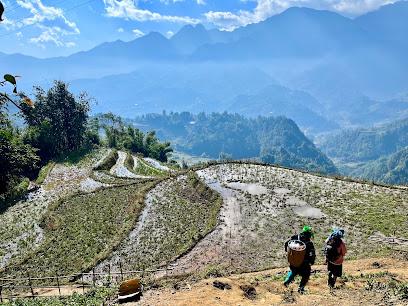
Fanxipan Mountain
Experience the breathtaking heights and cultural richness of Fanxipan Mountain, the tallest peak in Indochina, located in the stunning Sa Pa region of Vietnam.

Trekking Tour Sapa
Explore the stunning rice terraces and vibrant culture of Sapa with Trekking Tour Sapa, your gateway to adventure in Vietnam's breathtaking highlands.

Tu Viện Cổ Tả Phìn
Explore the tranquil Tu Viện Cổ Tải Phín in Sa Pa, Vietnam - a historic site blending spiritual heritage with breathtaking natural landscapes.

Fansipan Station
Experience breathtaking views and thrilling adventures at Fansipan Station, the gateway to Vietnam's highest peak, Fansipan Mountain.

Cổng Trời Ô Quý Hồ Sa Pa
Experience breathtaking views and rich cultural heritage at Cổng Trời Ô Quý Hồ, a top tourist attraction in Sa Pa, Vietnam.

Essential places to dine
Chicago Pizza
Discover Chicago Pizza in Sa Pa - where delicious flavors meet stunning mountain views for an unforgettable dining experience.
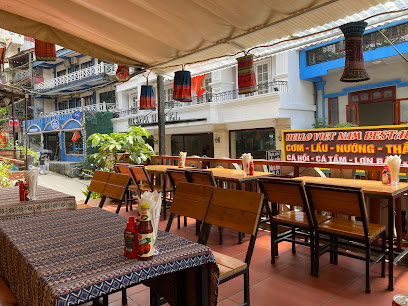
Nhà hàng Khám Phá Việt ( Thắng cố A Quỳnh )
Discover authentic Vietnamese flavors at Nhà hàng Khám Phá Việt in Sa Pa - where tradition meets taste.
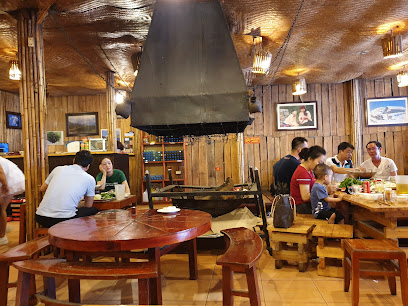
Good Morning Vietnam
Discover authentic Vietnamese flavors at Good Morning Vietnam in Sa Pa – where every meal is a journey through culinary heritage.

Moment Romantic Restaurant
Experience the perfect blend of Asian and European cuisines with breathtaking views at Moment Romantic Restaurant in Sa Pa.

A Phủ Restaurant
Experience authentic Vietnamese flavors at A Phủ Restaurant in Sa Pa – a must-visit culinary destination for every traveler.

Le Petit Gecko
Experience authentic French cuisine in the stunning highlands of Vietnam at Le Petit Gecko—a culinary gem in Sa Pa.

Chợ Tình Quán - 22 Ngũ Chỉ Sơn, Sapa
Experience authentic Vietnamese cuisine at Chợ Tình Quán in Sapa – where every dish tells a story.

Mẩy Quán - Tinh Hoa Ẩm Thực Sapa
Discover authentic Vietnamese flavors at Mẩy Quán in Sa Pa – where every dish tells a story of tradition and local culture.

Red Dzao House
Experience authentic Dzao cuisine at Red Dzao House in Sa Pa - a culinary journey through Vietnam's rich flavors.

Le Gecko Restaurant
Discover Le Gecko Restaurant in Sapa - where French culinary tradition meets Vietnamese hospitality amidst breathtaking mountain views.

NHÀ HÀNG SAPA TV
Discover authentic Vietnamese flavors at NHÀ HÀNG SAPA TV amidst breathtaking mountain views in Sapa.

Little Vietnam Restaurant
Experience authentic Vietnamese flavors at Little Vietnam Restaurant in scenic Sa Pa—where every meal tells a story.
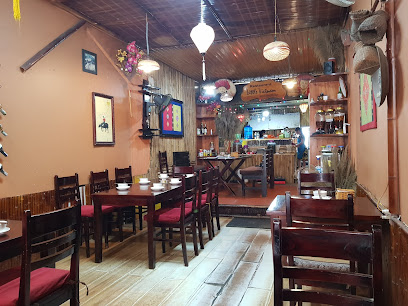
Yummy Restaurant
Discover the heart of Vietnamese cuisine at Yummy Restaurant in scenic Sa Pa, where every dish tells a story.

Ladybird Restaurant Hotel Cafe
Discover culinary delights at Ladybird Restaurant Hotel Cafe in Sa Pa - where authentic Vietnamese flavors meet cozy accommodations amidst breathtaking landscapes.
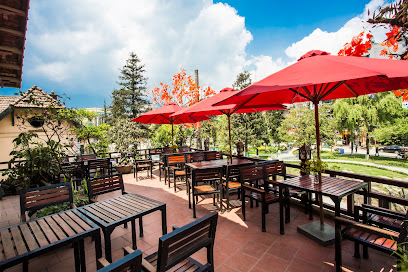
Little Sapa restaurant
Experience authentic Vietnamese cuisine at Little Sapa Restaurant, known for its delightful pho and warm hospitality amidst Sa Pa's stunning landscapes.

Markets, malls and hidden boutiques
Sun Plaza Sapa
Explore the vibrant Sun Plaza Sapa for a unique shopping experience filled with local flavors and treasures in the heart of Sa Pa, Vietnam.

Souvenir & Clothing Shop
Discover unique handicrafts and traditional clothing at Sa Pa's vibrant Souvenir & Clothing Shop, a perfect stop for memorable gifts.
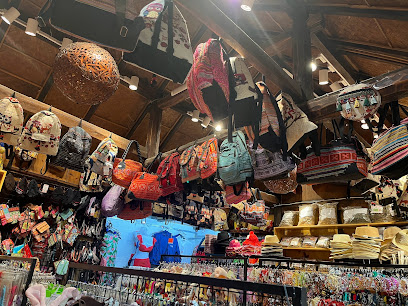
Indigo Cat
Discover the essence of Vietnamese craftsmanship at Indigo Cat, a unique handicraft store in Sa Pa offering exquisite handmade textiles, bags, and art.

Mai Souvenir ( Bán vì Đam Mê)
Discover unique gifts and handcrafted treasures at Mai Souvenir, the perfect spot for authentic souvenirs in Sa Pa, Vietnam.

Brocade Lan Rung (Wild Orchid Handicrafts)
Explore Brocade Lan Rung in Sapa for exquisite handicrafts and souvenirs that embody the rich culture and artistry of Vietnam's ethnic heritage.

indigo shop 2
Discover the beauty of Sa Pa's culture at Indigo Shop 2, a boutique offering unique handmade textiles and traditional crafts.

Hemp & Embroidery
Explore the artistry of Sa Pa at Hemp & Embroidery, where every handcrafted item tells a story of tradition and creativity.

Shop Treckking
Discover the vibrant fashion of Sa Pa at Shop Treckking, offering unique traditional and contemporary clothing to enhance your travel experience.

Mai Souvenir CS2
Discover the charm of Sa Pa at Mai Souvenir CS2, your premier destination for authentic Vietnamese handicrafts and souvenirs.
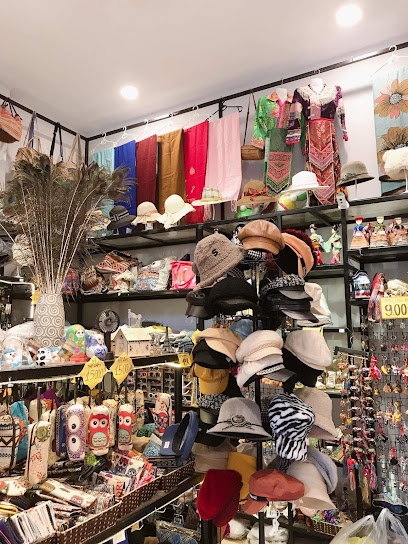
MAI SOUVENIR 1 SAPA
Explore the heart of Sapa with unique souvenirs and local handicrafts at Mai Souvenir 1 Sapa, a treasure trove for every traveler.

Kiên Huyền Store
Discover authentic Vietnamese craftsmanship at Kiên Huyền Store in Sa Pa, offering a rich selection of handmade textiles and unique souvenirs.

Đặc Sản Tây Bắc
Experience authentic Vietnamese cuisine at Đặc Sản Tây Bắc, a discount supermarket in Sa Pa offering local delicacies and fresh produce.
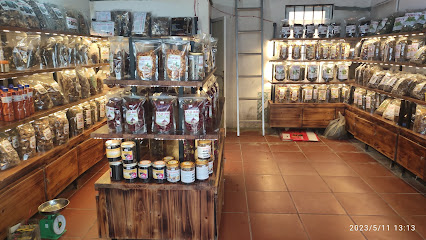
Lee Lee Sportswear Store החנות של לילי
Discover unique fashion at Lee Lee Sportswear Store in Sa Pa, Vietnam, where local style meets outdoor adventure in a stunning mountain setting.

Nhung Phát Store
Discover unique traditional clothing and crafts at Nhung Phát Store, a cultural gem in Sa Pa, Vietnam, reflecting local artistry and heritage.

Thổ Cẩm Sapa
Discover Sa Pa's rich culture at Thổ Cẩm Sapa, a discount supermarket filled with local products, handicrafts, and fresh produce, showcasing the region's vibrant heritage.

Essential bars & hidden hideouts
Saparis Eatery & Cocktail Bar
Experience the best of Vietnamese cuisine and vibrant cocktails at Saparis Eatery & Cocktail Bar in the heart of Sa Pa.

Color Bar Sapa
Experience the vibrant atmosphere of Color Bar Sapa, where refreshing drinks and stunning mountain views create an unforgettable escape in Vietnam.

The Hmong Sisters - Restobar
Experience the best of Vietnamese cuisine and local wines at The Hmong Sisters - Restobar in the scenic Sa Pa, Vietnam.

Relax Bar Sapa
Discover relaxation and stunning views at Relax Bar Sapa, a perfect retreat in the heart of Vietnam's scenic mountain town.

Why Bar OCB
Discover the perfect blend of local charm and vibrant nightlife at Why Bar OCB in Sa Pa, Vietnam, where unforgettable experiences await.

The Herbalist Sapa
Experience the unique blend of local herbs and vibrant nightlife at The Herbalist Sapa, a must-visit pub in the heart of Sa Pa, Vietnam.

Ninety Pub
Experience the lively charm of Ninety Pub in Sa Pa, Vietnam, where local culture and vibrant nightlife come together for an unforgettable evening.

Mountain Bar & Pub
Experience the vibrant atmosphere and stunning views at Mountain Bar & Pub in Sa Pa, where local flavors meet comfort.

AMG Lounge
AMG Lounge in Sapa: A perfect blend of local culture and modern nightlife awaits you in this vibrant bar.

T&G lounge sapa
Experience the perfect blend of relaxation and stunning mountain views at T&G Lounge in Sa Pa, a must-visit bar for all travelers.

BAR & KARAOKE INFINITY SAPA
Experience the vibrant nightlife of Sapa at Bar & Karaoke Infinity, where live music and karaoke create unforgettable memories.
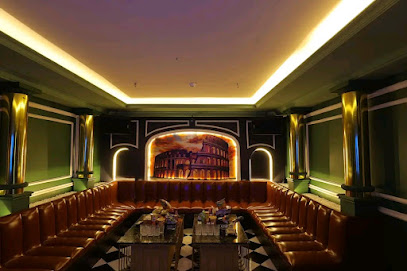
Skyline Bar
Experience breathtaking views and a relaxing atmosphere at Skyline Bar in Sa Pa, Vietnam, where nature meets nightlife.

Bb Sky Lounge Sapa
Discover stunning views and exquisite cocktails at Bb Sky Lounge in Sapa, where breathtaking landscapes meet a vibrant atmosphere.

Sapa Hills Bar
Discover the enchanting Sapa Hills Bar, where cocktails meet breathtaking views in Vietnam's stunning northern highlands.
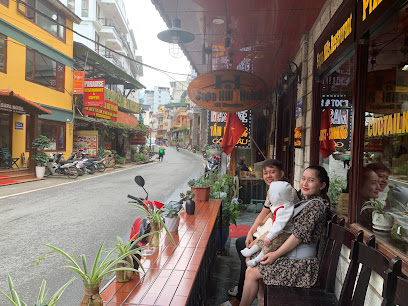
C.O Lounge Sapa
Experience the perfect blend of stunning views, cozy atmosphere, and exquisite drinks at C.O Lounge Sapa, your go-to bar in the heart of Sa Pa.

Travel experiences inspired by this city
Explore more travel diariesLocal Phrases
-
- HelloXin chào
[sin chow] - GoodbyeTạm biệt
[tam byet] - YesCó
[koh] - NoKhông
[kohng] - Please/You're welcomeXin vui lòng
[sin vui long] - Thank youCám ơn
[kahm uhn] - Excuse me/SorryXin lỗi
[sin loy] - How are you?Bạn khỏe không?
[buhn kweh kohng?] - Fine. And you?Khỏe. Còn bạn?
[kweh. kuhn buhn?] - Do you speak English?Bạn có nói tiếng Anh không?
[buhn koh noy tyeng ang kohng?] - I don't understandTôi không hiểu
[toy kohng hyehu]
- HelloXin chào
-
- I'd like to see the menu, pleaseTôi muốn xem menu, vui lòng
[toy muhn sem menu, vwee long] - I don't eat meatTôi không ăn thịt
[toy kohng an tit] - Cheers!Chúc sức khỏe!
[chuhk sook kweh] - I would like to pay, pleaseTôi muốn thanh toán, vui lòng
[toy muhn thanh toan, vwee long]
- I'd like to see the menu, pleaseTôi muốn xem menu, vui lòng
-
- Help!Cứu!
[kyoo] - Go away!Đi ra!
[dee ra] - Call the Police!Gọi cảnh sát!
[goy keng saht] - Call a doctor!Gọi bác sĩ!
[goy bahk see] - I'm lostTôi bị lạc
[toy bee lack] - I'm illTôi bị ốm
[toy bee ohm]
- Help!Cứu!
-
- I'd like to buy...Tôi muốn mua...
[toy muhn mwa] - I'm just lookingTôi chỉ xem thôi
[toy chee sem toy] - How much is it?Bao nhiêu tiền?
[bou nyew tyen] - That's too expensiveĐắt quá
[dat kwa] - Can you lower the price?Bạn có thể giảm giá được không?
[buhn koh te zyem zya dook kohng?]
- I'd like to buy...Tôi muốn mua...
-
- What time is it?Bây giờ là mấy giờ?
[by goh la may zoh?] - It's one o'clockBây giờ là một giờ
[by goh la moht zoh] - Half past (10)Mười giờ ba mươi
[mooee zoh bah mooee] - MorningBuổi sáng
[bwee sang] - AfternoonBuổi chiều
[bwee chee-oo] - EveningBuổi tối
[bwee toy] - YesterdayHôm qua
[hom kwa] - TodayHôm nay
[hom nai] - TomorrowNgày mai
[nyai my] - 1Một
[moht] - 2Hai
[hay] - 3Ba
[bah] - 4Bốn
[bohn] - 5Năm
[nahm] - 6Sáu
[sow] - 7Bảy
[bay] - 8Tám
[tahm] - 9Chín
[cheen] - 10Mười
[mooee]
- What time is it?Bây giờ là mấy giờ?
-
- Where's a/the...?Chỗ...ở đâu?
[cho...uh dah-oo?] - What's the address?Địa chỉ là gì?
[dea chee la zee?] - Can you show me (on the map)?Bạn có thể chỉ cho tôi (trên bản đồ) không?
[buhn koh te chee cho toy (truhn bahn doh) kohng?] - When's the next (bus)?Khi nào là chuyến xe (buýt) tiếp theo?
[khee nyao la chuyen se (bwit) tyep theo?] - A ticket (to ....)Một vé (đến ....)
[moht veh (den ....)]
- Where's a/the...?Chỗ...ở đâu?
History of Sapa
-
Long before Sapa became a popular tourist destination, it was home to various indigenous tribes, including the Hmong, Dao, Tay, and Giay. These tribes have lived in the region for centuries, cultivating the terraced fields and maintaining their unique cultural traditions.
-
The French colonial period in Vietnam significantly impacted Sapa's development. In the early 20th century, French explorers discovered the region's cool climate and scenic beauty, leading to the establishment of Sapa as a hill station. The French built villas, churches, and other structures, many of which still stand today, contributing to the town's architectural diversity.
-
During the First Indochina War (1946-1954), Sapa was a strategic location. The region saw several skirmishes between the Viet Minh forces and the French colonial army. The war left a lasting impact on the local communities, with many buildings destroyed and lives disrupted.
-
After the end of the Indochina War and the subsequent Vietnam War, Sapa underwent significant reconstruction. The Vietnamese government invested in infrastructure development to revive the town. This period saw the rebuilding of roads, schools, and healthcare facilities, laying the foundation for Sapa's future growth.
-
The late 20th century marked the beginning of Sapa's transformation into a major tourist destination. The Vietnamese government's Doi Moi economic reforms opened the country to international tourism. Sapa's stunning landscapes, terraced fields, and rich cultural heritage attracted visitors from around the world, leading to rapid economic growth and modernization.
-
As tourism in Sapa grew, so did concerns about preserving the unique cultural and natural heritage of the region. Local authorities and NGOs have implemented various initiatives to protect the traditional lifestyles of indigenous tribes and conserve the environment. These efforts include promoting sustainable tourism practices and supporting local artisans and farmers.
-
Today, Sapa is a vibrant town that seamlessly blends traditional culture with modern amenities. Visitors can explore bustling markets, ancient stone paths, and ethnic villages, while also enjoying contemporary comforts such as hotels, restaurants, and guided tours. Sapa continues to evolve, balancing the demands of tourism with the need to preserve its unique heritage.
Sapa Essentials
-
Sapa is located in the northern region of Vietnam, within the Lao Cai Province. The nearest major city is Hanoi, from which you can reach Sapa by train or bus. The overnight train journey from Hanoi to Lao Cai Station takes approximately 8 hours, followed by a 1-hour bus or taxi ride to Sapa. Alternatively, you can take a direct bus from Hanoi to Sapa, which takes around 6 hours. For a more convenient and comfortable journey, consider booking a ticket on a luxury bus or train service.
-
Within Sapa, transportation options include taxis, motorbike taxis (xe om), and rental motorbikes. Walking is also a popular way to explore the town and nearby attractions, especially for those who enjoy trekking. For trips to more remote areas, hiring a local guide with transportation is recommended. Buses and shuttle services are available for travel to nearby villages and tourist spots. Rental cars are less common, but can be arranged through travel agencies.
-
The official currency in Vietnam is the Vietnamese Dong (VND). While credit cards are accepted in some hotels, restaurants, and shops, it is advisable to carry cash, especially in smaller establishments and rural areas. ATMs are available in Sapa, but it is wise to withdraw sufficient cash before traveling to more remote locations. Some places may also accept USD, but it is always best to have local currency on hand.
-
Sapa is generally a safe destination for tourists. However, like any travel destination, it is advisable to take standard precautions. Avoid walking alone at night in unfamiliar areas and keep an eye on your belongings in crowded places, such as markets. Petty theft can occur, so be cautious with your valuables. There are no specific high-crime areas targeting tourists, but staying vigilant is always advisable.
-
In case of emergency, dial 113 for police, 115 for medical emergencies, and 114 for fire services. The local police station and medical facilities are available in Sapa. It is recommended to have travel insurance that covers medical emergencies. For minor health issues, there are several pharmacies in town where you can purchase over-the-counter medications. The nearest major hospital is in Lao Cai, about an hour away by road.
-
Fashion: Do dress modestly, especially when visiting local villages and religious sites. Avoid wearing revealing clothing. Religion: Do respect local customs and traditions. Always ask for permission before entering homes or taking photos of people, especially in ethnic minority villages. Public Transport: Do be respectful and follow local etiquette. Don't eat or drink on public transport. Greetings: Do greet people with a smile and a slight bow. A handshake is also acceptable. Eating & Drinking: Do try local delicacies and accept food offerings graciously. Don't refuse hospitality, as it is considered impolite.
-
To experience Sapa like a local, consider visiting the weekly markets in nearby villages, such as the Bac Ha Market, where you can buy local produce and handicrafts. Engage with the ethnic minority communities, such as the Hmong and Red Dao people, who are known for their friendly demeanor and unique cultural practices. Trekking through the terraced rice fields and staying in a homestay can provide an authentic experience. Don't miss the opportunity to visit Fansipan Mountain, known as the 'Roof of Indochina,' accessible via a cable car offering stunning views.
Trending Landmark in Sapa
-
Ga cáp treo SUN WORLD FANSIPAN LEGEND
-
Notre Dame Cathedral
-
Hôtel de la Coupole - MGallery
-
Khu du lịch sinh thái Hàm Rồng
-
Eden Massage & Spa
-
Nhà hàng Khám Phá Việt ( Thắng cố A Quỳnh )
-
Silk Path Grand Sapa Resort & Spa
-
Silver Waterfall
-
Mega View Homestay
-
Sun World Fansipan
-
The roof of Indochina
-
Good Morning View Restaurant
-
Sapa Park
-
Moana Sapa - Checkin, Coffe and BBQ
-
Old French Church
Nearby Cities to Sapa
-
Things To Do in Hanoi
-
Things To Do in Xieng Khouang
-
Things To Do in Muang Sing
-
Things To Do in Luang Prabang
-
Things To Do in Phonsavan
-
Things To Do in Ha Long
-
Things To Do in Vang Vieng
-
Things To Do in Chiang Rai
-
Things To Do in Vientiane
-
Things To Do in Nan
-
Things To Do in Thakhek
-
Things To Do in Udon Thani
-
Things To Do in Loei
-
Things To Do in Chiang Mai
-
Things To Do in Savannakhet














